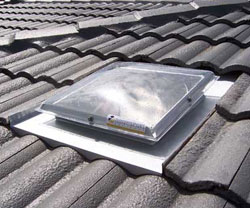Loft Ventilation Tips
Whether you’re planning for a new loft space or have an existing loft that needs to be ventilated, the following tips will ensure that your project goes as smoothly as possible:
How Much Space is Needed?
The question that gets asked the most is how much space is needed to properly ventilate a loft. Common assumptions include:
- Ventilation is useful, but not required
- The more space, the better
- A certain number of vents
The first assumption is incorrect because ventilation is an absolute necessity unless you want to put yourself in a situation where problems like structural warping and mold growth are very likely to occur. Although many people make the second assumption, simply adding as much ventilation as possible will actually make your system less effective and can even cause additional problems. While the last assumption is the closest to the truth, the required amount of ventilation for a loft is based on space instead of determining a specific number of vents.
To accurately calculate how much ventilation you need, the number you have to know is the total area of your loft in square feet. Once you figure out this number, divide it by 150. The answer will be the total number of square feet you need for ventilation. Keep in mind that half of that number will be for intake, while the other half will be for exhaust.
Are Ridge Vents Right for Your Project?
If you are planning on ridgepole or truss construction, the answer is yes. One of the reasons that this type of vent can work very well is because of its weather filter. Not only will this help protect against inclement weather, but it’s also a guard against insects and dust that will try to get into your loft area. An important tip to remember about ridge vents is if you are using them in conjunction with gable vents, the latter should be closed. While this may seem counterintuitive, the reason it’s important is because it will ensure a consistent flow of air. Failing to close the gable vents can result in the desired flow being interrupted.
Do You Actually Need Intake Vents?
During the planning stages for loft ventilation, some people question whether or not they even need to add intake vents to this area. If this question has crossed your mind, it’s worth noting that intake vents are just as important as exhaust vents for a ventilation system to function as efficiently as possible. If you want the best results from the ventilation you add to your loft, it’s a good idea to balance the roof’s peak exhaust vents with overhang intake vents. Using this configuration will keep air moving as freely as possible. By achieving this type of balanced ventilation, you will ensure that not only does air avoid becoming stagnant, but also that the vents don’t simply pull air from only one section of the loft.

Categories
- Home
- Loft Ventilation Information
- DIY Loft Ventilation
- Loft Insulation and Ventilation
- Loft Ventilating Roof Space
- Loft Ventilation and Condensation
- Loft Ventilation Building Regulations
- Loft Ventilation Costs
- Loft Ventilation Ideas
- Loft Ventilation Installation
- Loft Ventilation Plans
- Loft Ventilation Problems
- Loft Ventilation Tips
- Loft Ventilation Companies
- Loft Ventilation Products
- Types Of Loft Ventilation
